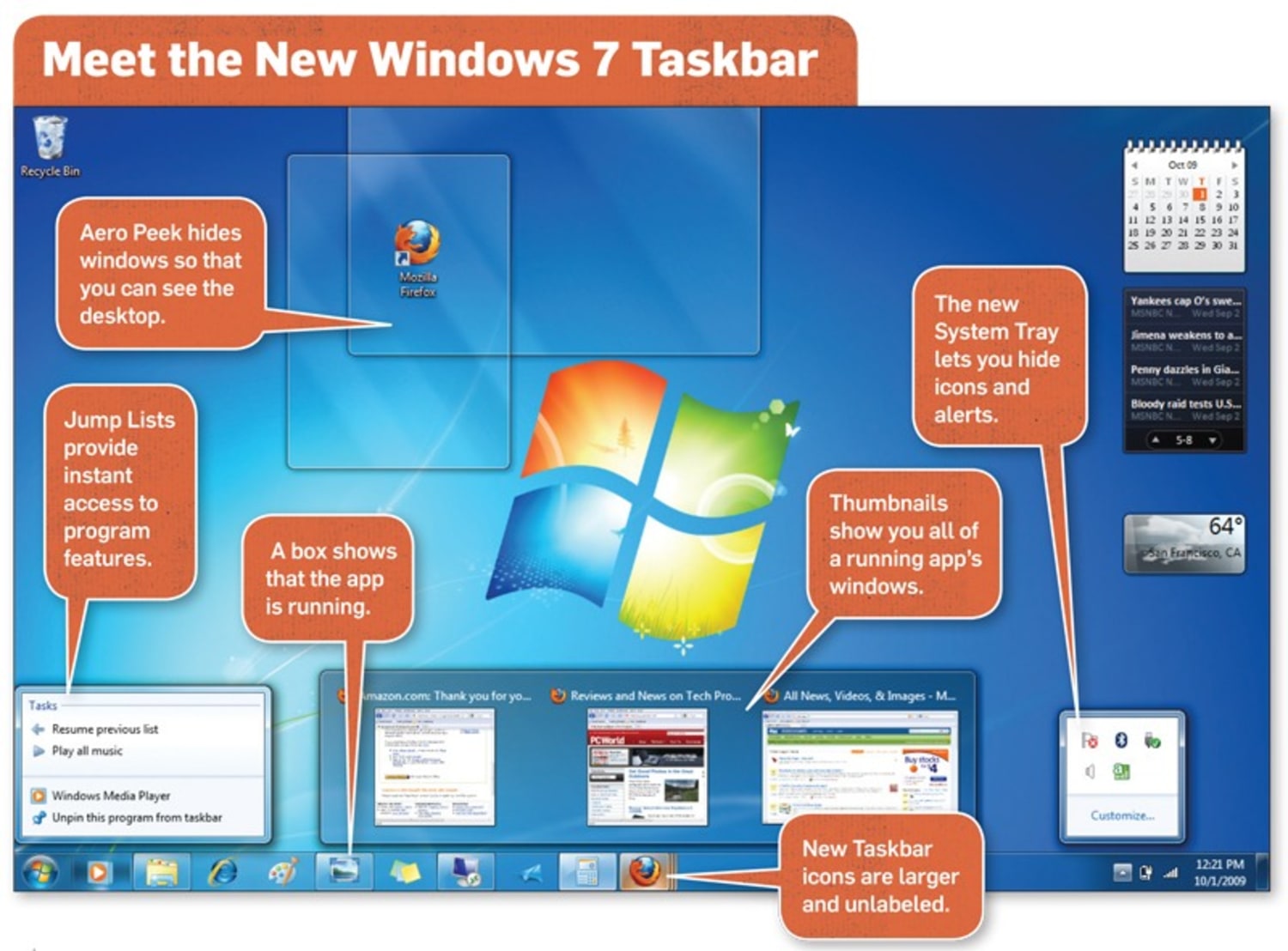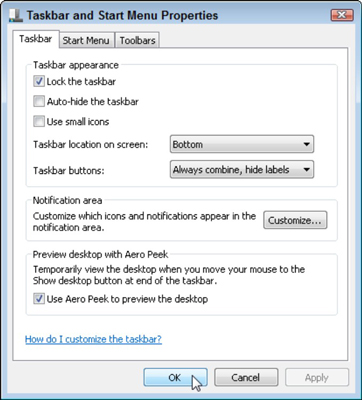

- #Keep windows on top of taskbar windows 7 how to
- #Keep windows on top of taskbar windows 7 install
- #Keep windows on top of taskbar windows 7 windows 7
What, you didn’t know the actual Word program name is winword.exe? For example, if you want to run Word, you have to type “winword.exe”.

However, this assumes you know the exact name of the application. If you type the name of the program, it will run. All you have to do is hold down the Windows logo key and the R key at the same time. If you have a lot of programs installed, consider using the keyboard instead of hunting for them in the All Programs window. Now that you’ve customized the Start menu to your preferences, it’s time to look at some additional shortcuts and tips on using the Start menu.
#Keep windows on top of taskbar windows 7 windows 7
The policy editor lets you change many Windows settings, including the Start menu and Taskbar.If you’re so inclined, you can change many more settings by running the Windows 7 Group Policy Editor, but be cautious when using the policy editor.
#Keep windows on top of taskbar windows 7 install
(If you change it after you’ve installed a bunch of apps, it will remain sorted alphabetically for a time, until you install more apps.) What you won’t get is the old Windows XP behavior, where you could manually reorder the icons in the Start menu. Note that I leave “Sort All Programs menu by name” enabled (that’s the default.) If you uncheck it, the Start menu will sort programs by most recently installed. It has some useful stuff that’s hard to find, so enabling this tools display is often helpful when you need to troubleshoot a problem. I like having access to system management tools. By default, this display option is turned off. This avoids having to type “Run” in the search box. On the other hand, it’s very handy to have quick access to recent files, without needing to find the Jump List for the individual application that may be associated with the files. I turned this on, but it’s one of those items you may want leave disabled on a shared system. I don’t often access this folder, but when I do, I want to get to it quickly, so enabling it as a link is fine. That’s a much quicker way to launch games that are in the Windows games folder. I display this in the Start menu as a fly-out menu. The default is “Don’t display,” but I like it as a link, which lets me get to the Downloads folder with one click. I enabled “Display as a menu.” The various drives and top folders appear on a fly-out menu. If you’re running on a relatively low-resolution monitor (like a laptop), you may want to keep the number at 10. The default is 10 I set it to 20, since I have a large display.

Number of recent programs / recent items to display (under “Start menu size”).
My personal preference is alphabetical sort, which you could do in XP by context clicking on the All Programs section and sorting. This tends to give recent XP converts heartburn, but you can change this behavior when you customize the Start menu. Unlike XP, though, the applications are sorted alphabetically. Lots of people happily use the Start menu in this state, which is very XP-like. When you start up a new system, or perform a clean install of Windows, this is the Start menu you see. The Start menu, at its most basic.The Start menu is so named because that’s where you go to start applications, restart or shut down Windows, and perform other basic application management chores.
#Keep windows on top of taskbar windows 7 how to
I’ll first walk through the plethora of options for each, and then dive into how to use them more effectively. However, they also offer a slew of additional capabilities and customization options that aren’t obvious when you first look at them. In Windows 7, the Start menu and the taskbar have become both easier to use and more sophisticated.


 0 kommentar(er)
0 kommentar(er)
